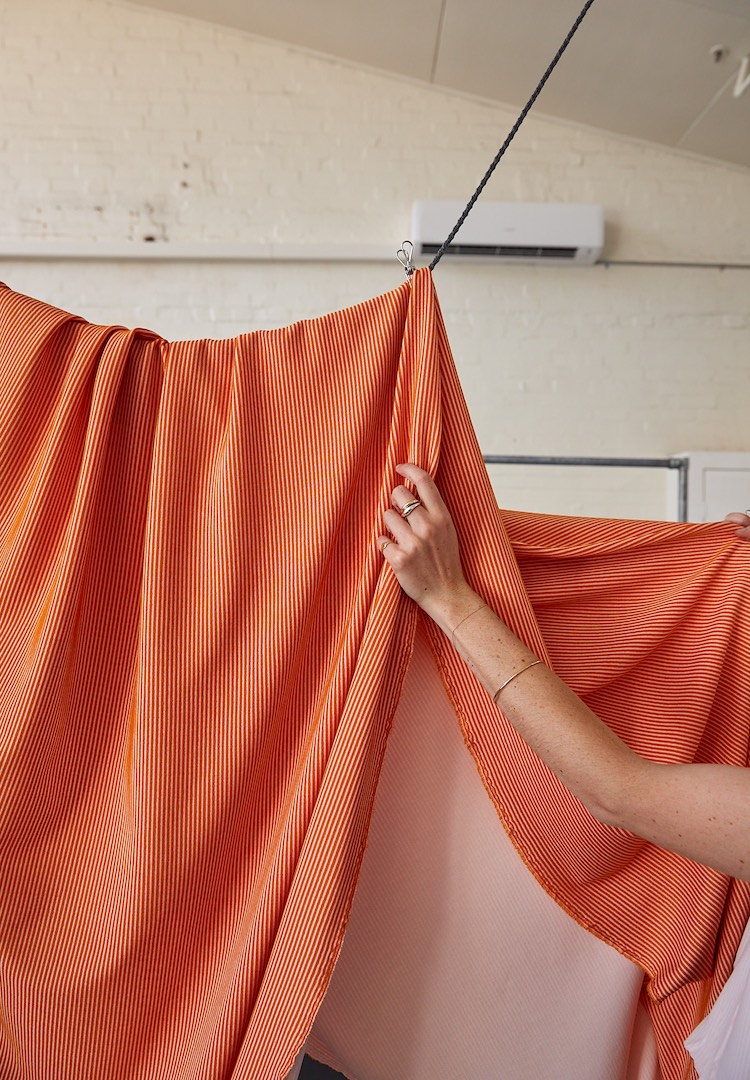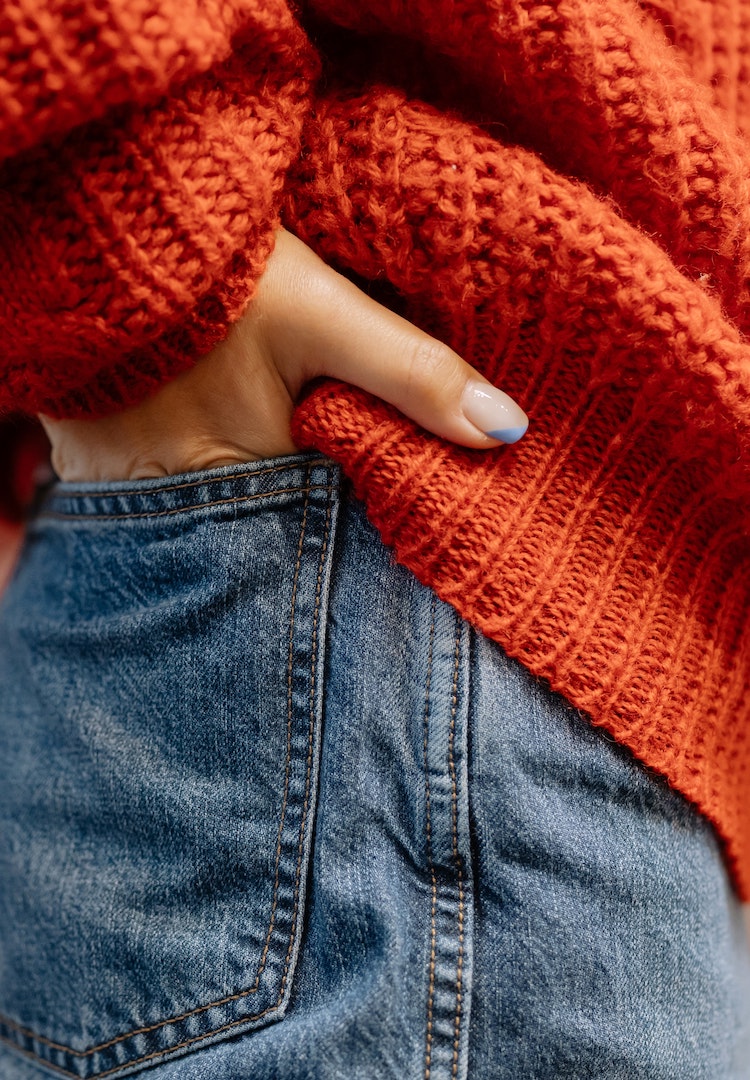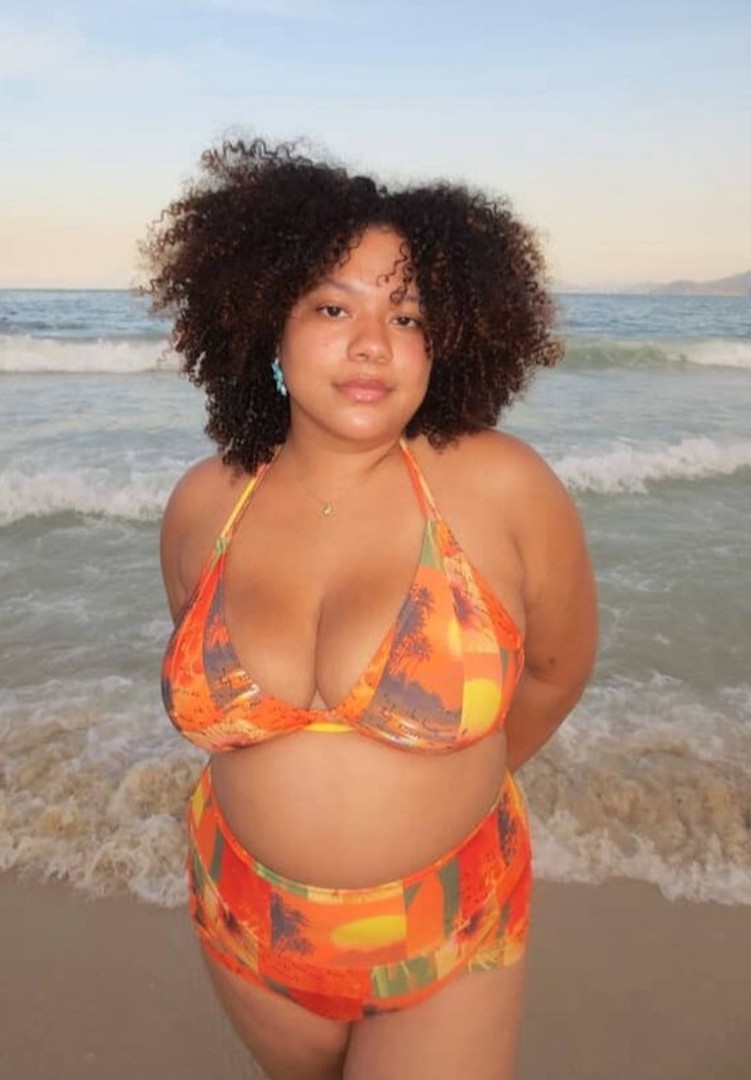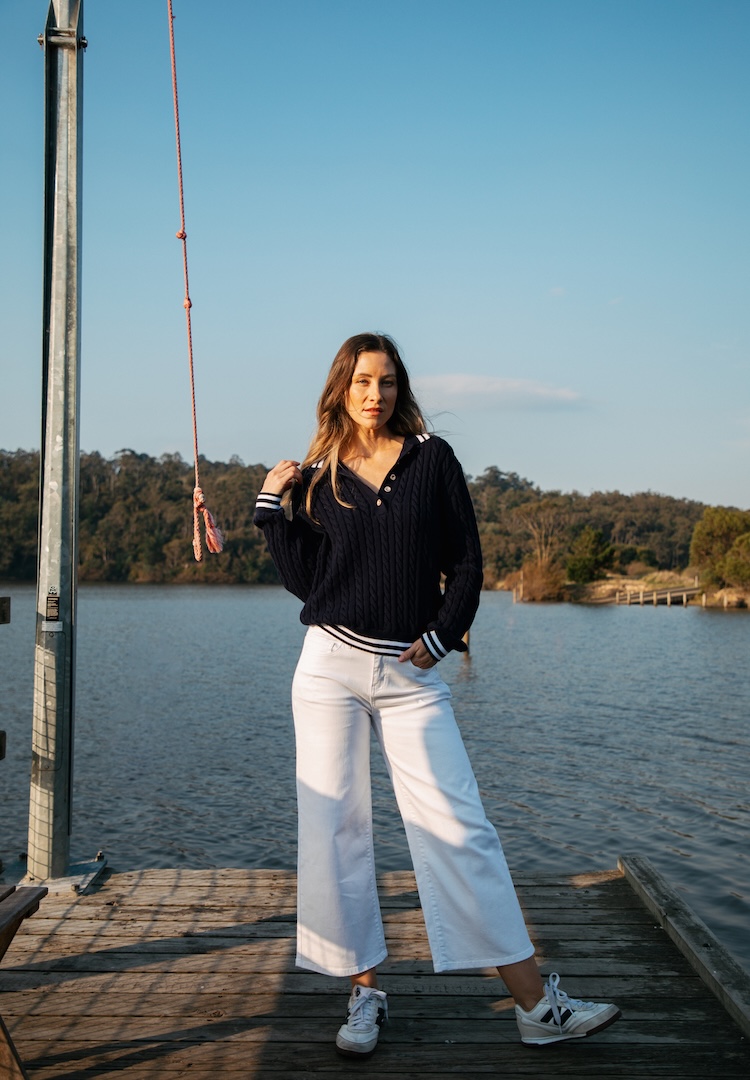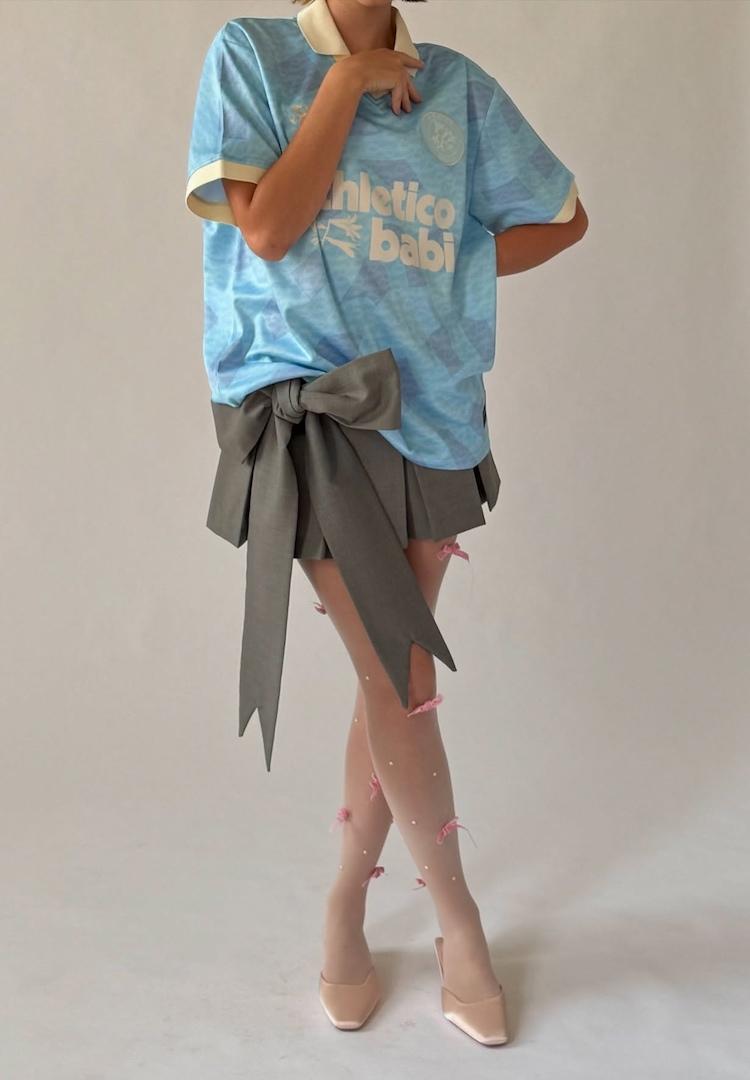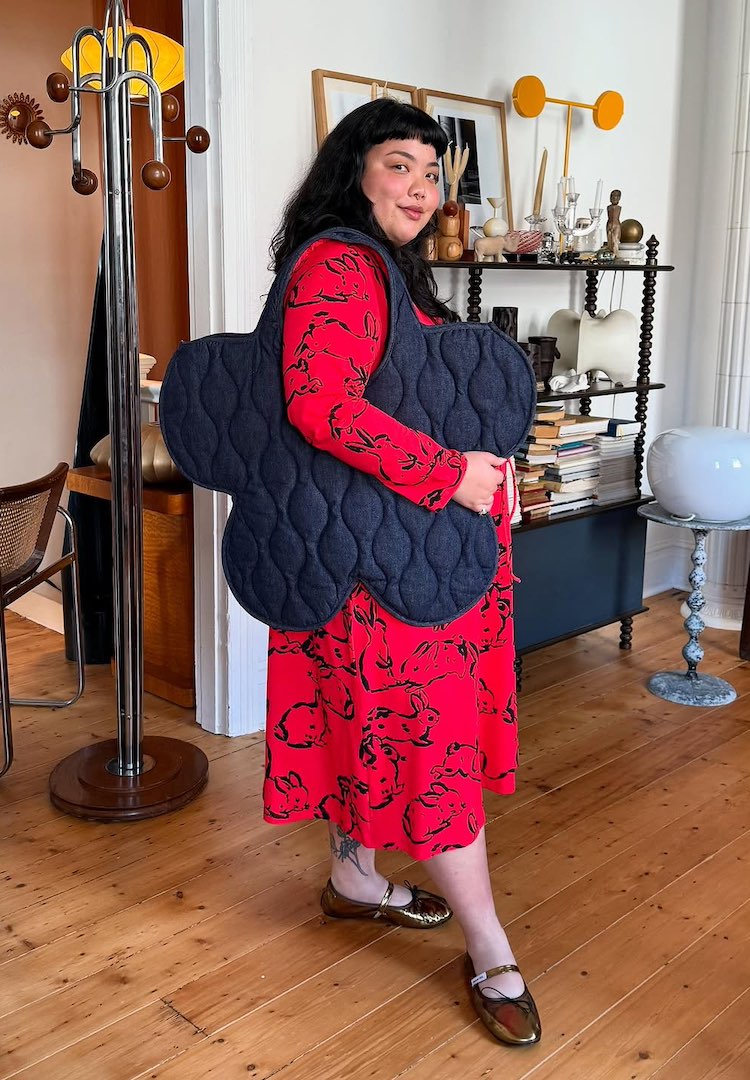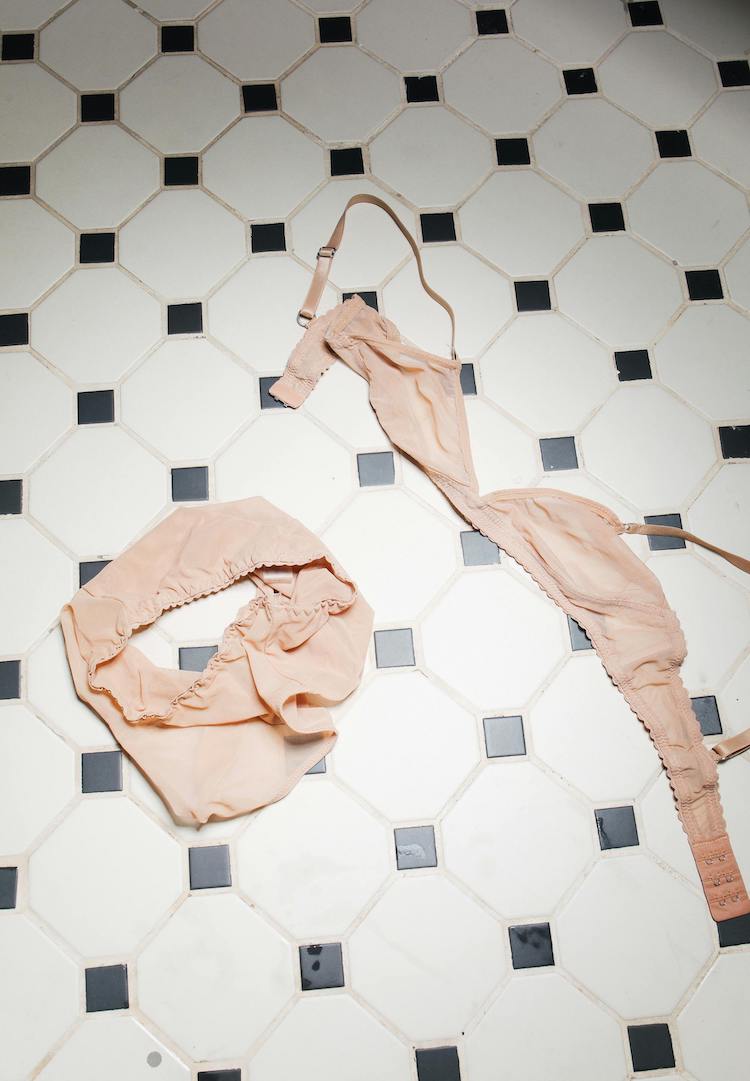Circular Sourcing is Australia’s new marketplace for buying and selling designer deadstock
WORDS BY MAGGIE ZHOU
What goes around, comes around.
In recent years, Australia’s fashion industry has had a reckoning. The result? Innovative individuals banding together to come up with solutions that stand up against fashion’s overproduction and depleting resource issues.
Fashion has a toxic relationship with waste, that much we all know. But it’s not just unsold stock, fleeting micro-trends or the fact the average garment is only worn seven times before it’s thrown out – the problems are deep-seated. At the fabric stage, surplus materials are the norm. Processes of sampling and refining collections often mean suppliers are left with unused and unwanted fabrics, literally collecting dust.
For more fashion news, shoots, articles and features, head to our Fashion section.
Circular Sourcing is a new digital space aiming to combat this. Spearheaded by Courtney Holm, the founder of Melbourne label A.BCH, with the backing of Sustainability Victoria’s Circular Economy Business Innovation Fund, Circular Sourcing launched in July this year.
The fabric consignment marketplace offers an opportunity for fashion businesses to sell any surplus fabrics they have – extending the longevity of the materials and earning a profit simultaneously. It’s a win-win for sellers and buyers, and the environment. Here, we chat with Courtney about the platform’s inspiration, processes and her hopes for the future.
What was the inspiration behind Circular Sourcing?
I had this realisation probably five years ago when I was visiting a supplier and I saw how much surplus fabric they had. And I was like, “What happens to all this material?” and they were like, “Nothing, it just sits here”.
With minimum orders that are required, [suppliers] have to create a certain amount of sampling every time someone wants to try out a fabric. They make like 100 or 200 metres and then they’ll send about 10 metres of sampling or whatever it is the person wants… This sampling amount [sometimes] stays unused.
A few years back [in 2018], I started this online store to start selling [A.BCH’s leftover fabric]. And I was like, ‘Why is there no place for everybody to do this? Why shouldn’t everyone be selling their surplus materials because there are so many people that want to use it?’.
At its core, the idea is so simple. Sometimes, the solutions are right in front of us, right?
We’re not doing anything that radical; it’s not crazy technology or anything, it’s a marketplace. Coming from a supply chain background, I knew the struggle of sellers. We’ve been trying to make it really easy for them [so it’s] really streamlined… and actually just gives them extra money. It’s been good and we didn’t invent this idea. There are plenty of surplus fabric marketplaces around the world, we just didn’t have one in Australia for Australian materials.
I love how you can see who the sellers are – I’ve spotted the likes of Australian labels like Jillian Boustred and The Social Studio.
The sellers can decide if they want to be anonymous or if they want to list their business name. It’s actually been really interesting because a lot of them have wanted to be publicly known, whereas I’m sure we’ll get some sellers down the track that don’t want people to know it’s [their] fabric for IP reasons or whatever.
Who are your current buyers? Are they people who are brand owners themselves, people who dabble in fashion or students?
It’s mostly for small businesses. But there’s no reason why there isn’t fabric on there for slightly bigger businesses that are trying to expand their materials to include more deadstock. There’s no reason why we couldn’t include home sewers or hobbyists that are looking for something because some of the sellers are selling by the metre [and] don’t have any minimum orders.
There should be something for everybody. But our primary market is small businesses, whether they’re startups, micro businesses or solo practitioners [who] can’t necessarily afford to get all the fancy sustainability credentials. They can still participate in the circular economy.
Where do you hope to be in five, 10 years?
It’s technically still a pilot [so] we’re seeing how it goes. There’s been so much interest and people are really excited about it on both sides. I’m really surprised how many more buyers are out there that want to buy this material – I actually thought there would be more supply than demand at the start, but I think it’s actually the other way around.
We have a lot of good ideas that can sprout from this, like not just listing fabrics, but also listing any surplus materials like threads or buttons or labels. We want it to spark innovation with fabric makers and designers that are creating the next round of fabrics.
[Ideally in] the future, they will start to invest more into sustainable development and fabric innovation because they have that freed-up revenue [from selling excess fabrics]. It should hopefully de-risk that innovation for them and they don’t have to feel like they’re going to be left with all this stuff that no-one ended up buying.
To find out more about Circular Sourcing, head here.


